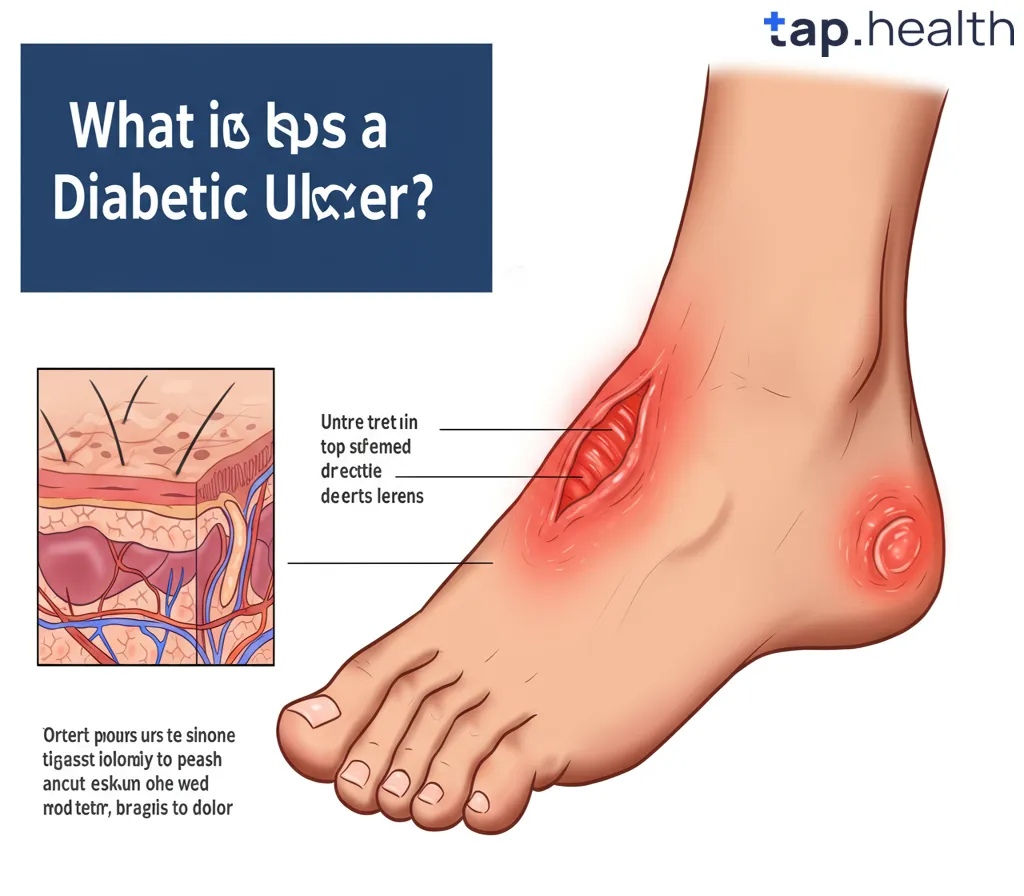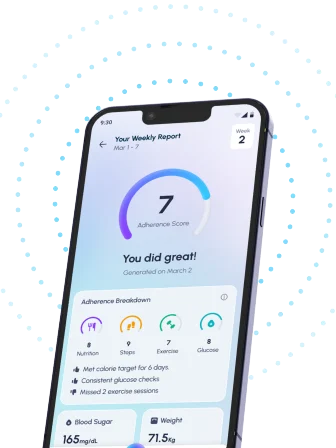Table of Contents
- Low Potassium in Diabetes: Spotting Hypokalemia Early
- Understanding Hypokalemia: Warning Signs for Diabetics
- Diabetes & Low Potassium: A Guide to Recognizing Hypokalemia
- Low Potassium Symptoms in Diabetics: Is It Hypokalemia?
- Prevent Low Potassium: Managing Hypokalemia with Diabetes
- Frequently Asked Questions
- References
Living with diabetes often means navigating a complex landscape of health concerns, and one often overlooked is the risk of low potassium. Understanding the connection between Low Potassium & Diabetes: Recognizing Hypokalemia Warning Signs is crucial for managing your condition effectively. This isn’t just about numbers on a blood test; we’re talking about recognizing potentially serious symptoms that can significantly impact your well-being. In this post, we’ll explore the causes, symptoms, and management strategies for hypokalemia in individuals with diabetes, empowering you to take control of your health. Let’s dive in and learn how to identify and address this important issue.
Low Potassium in Diabetes: Spotting Hypokalemia Early
Hypokalemia, or low potassium, is a serious complication that can affect individuals with diabetes, particularly in regions like India and other tropical countries. It’s often overlooked, yet significantly impacts health outcomes. Over 30% of diabetic patients in these regions report HbA1c levels above 9%, a strong indicator of poor blood sugar control, which increases the risk of hypokalemia. This underscores the importance of early detection and management.
Recognizing the Symptoms
Symptoms of hypokalemia can be subtle and easily missed. Common signs include muscle weakness or cramps, particularly in the legs, fatigue, and constipation. Some individuals may also experience palpitations or an irregular heartbeat. In severe cases, hypokalemia can lead to paralysis or even life-threatening cardiac arrhythmias. Pay close attention to these symptoms, especially if you have diabetes and live in a tropical climate where dehydration, a contributing factor to low potassium, is more common.
Seeking Medical Attention in India and Tropical Countries
If you experience any of these symptoms, it’s crucial to consult a doctor immediately. Early diagnosis and treatment are essential to prevent serious complications. In many parts of India and tropical countries, access to healthcare may vary. Proactive monitoring of potassium levels through regular blood tests, especially for those with poorly controlled diabetes (HbA1c > 9%), is strongly advised. Don’t hesitate to seek medical attention; your health is paramount. Discuss dietary changes and appropriate supplementation with your physician to manage your potassium levels effectively and prevent further health issues. It’s important to remember that while this article focuses on low potassium, high potassium can also be a concern, as seen in conditions like Why is Potassium High in Diabetic Ketoacidosis?. Managing your overall health, including aspects like How to Manage Cholesterol Levels with Diabetes?, is crucial for preventing complications.
Understanding Hypokalemia: Warning Signs for Diabetics
The Silent Danger of Low Potassium
Diabetes significantly impacts potassium levels in the body. While maintaining healthy blood sugar is crucial, understanding the risk of hypokalemia (low potassium) is equally vital, especially in regions like India and other tropical countries where dietary habits and certain health conditions can exacerbate this issue. Low potassium, often asymptomatic in its early stages, can lead to serious health complications. Remember, levels below 5.7% are considered normal; 5.7%–6.4% indicates prediabetes, and 6.5% or higher suggests diabetes – but these are just guidelines, and individual needs vary. Regular blood tests are essential for early detection.
Recognizing the Symptoms
Hypokalemia’s symptoms can be subtle and easily mistaken for other ailments, making early detection challenging. Common signs include muscle weakness or cramps (especially leg cramps), fatigue, constipation, irregular heartbeat, and even numbness or tingling in the extremities. In hotter climates prevalent in India and tropical regions, dehydration can worsen potassium depletion, leading to more severe symptoms. Pay close attention to these signs, especially if you have a history of diabetes or other related health issues. If you’re concerned about the early signs of diabetes itself, you might find our article on 10 Early Signs and Symptoms of Diabetes? helpful.
Protecting Yourself: Actionable Steps
Prioritizing a potassium-rich diet is crucial. Incorporate foods like bananas, potatoes (with skin), spinach, and coconut water into your daily meals. These foods are readily available and commonly consumed in many Indian and tropical cuisines. Consult your doctor or a registered dietitian to create a personalized dietary plan that addresses your specific needs and considers the climatic conditions. Regular check-ups and monitoring of your potassium levels are paramount for preventing serious complications. Don’t hesitate to seek medical attention if you experience any of the mentioned symptoms. Early intervention is key to managing hypokalemia effectively. Remember that managing diabetes also involves protecting your heart; read more about that in our article, Protect Your Heart from Diabetes: 5 Essential Steps.
Diabetes & Low Potassium: A Guide to Recognizing Hypokalemia
Diabetes and low potassium (hypokalemia) are often intertwined, particularly in regions like India and other tropical countries. This is a significant concern given that over 60% of people with diabetes in India also have hypertension, according to the International Diabetes Federation. Understanding the warning signs of hypokalemia is crucial for managing both conditions effectively.
Recognizing the Symptoms
Hypokalemia symptoms can be subtle and easily overlooked, often manifesting as fatigue, muscle weakness, or cramps. More severe cases can present with irregular heartbeat (arrhythmia), constipation, and even paralysis. In hot climates prevalent in many tropical regions, dehydration can exacerbate potassium loss, making vigilance even more critical. Pay close attention to any unusual muscle weakness, especially in your legs, as this is a common early sign.
Managing Your Risk
Maintaining healthy potassium levels is vital for people with diabetes. A balanced diet rich in potassium-rich fruits and vegetables, such as bananas, potatoes, and spinach, is essential. Regular blood tests to monitor potassium levels are crucial, especially if you’re taking diuretics which can increase potassium excretion. Consult your doctor or a registered dietitian to create a personalized plan that addresses your specific needs and considers your geographical location and dietary habits. Prompt diagnosis and management of both diabetes and hypokalemia are key to preventing serious complications. As you age, managing diabetes can become even more challenging; consider reading more about this in our article on Managing Diabetes as You Age: Challenges and Solutions.
Taking Action
Don’t ignore subtle changes in your body. If you experience any of the symptoms mentioned above, especially if you have diabetes, seek immediate medical attention. Early detection and intervention are crucial in preventing more serious health issues associated with hypokalemia, particularly for individuals in high-risk groups in India and other tropical countries. Your health is your responsibility; take proactive steps to manage your diabetes and protect yourself from the risks of low potassium. If you are planning any travel, it’s important to be prepared. Check out our guide on Traveling with Diabetes: Essential Tips for a Safe & Healthy Journey for helpful advice.
Low Potassium Symptoms in Diabetics: Is It Hypokalemia?
Diabetes affects a significant global population, with over 75% of those living with the condition residing in low- and middle-income countries, as highlighted by the IDF Diabetes Atlas. In India and other tropical countries, understanding the potential complications of diabetes, such as hypokalemia (low potassium), is crucial for effective management and prevention. Many individuals experience low potassium without realizing it, potentially worsening their diabetic condition.
Recognizing the Warning Signs
Symptoms of hypokalemia can be subtle and often overlooked, particularly in individuals already managing other diabetes-related symptoms. Common signs include muscle weakness, fatigue, and cramps, especially in the legs. Constipation is another frequent symptom often ignored in warmer climates. Irregular heartbeat (arrhythmia) is a more serious sign, potentially leading to life-threatening complications. In some cases, hypokalemia can manifest as numbness or tingling in the extremities. These symptoms may be exacerbated by factors common in tropical climates, like dehydration and increased sweating. It’s important to note that some symptoms, like fatigue, can overlap with other conditions. For example, fatigue is also a common symptom of low blood pressure.
Seeking Medical Attention in India and Tropical Regions
If you experience any of these symptoms, it’s crucial to consult a doctor immediately. Early diagnosis and treatment are essential to prevent serious complications. Regular blood tests are vital for monitoring potassium levels, especially for those with diabetes. Remember, early detection and proactive management of hypokalemia are key to maintaining good health, particularly within the context of prevalent diabetes in Indian and tropical populations. Discuss your concerns with your healthcare provider and develop a personalized management plan. While this article focuses on low potassium, it’s also important to be aware of other digestive issues. For instance, symptoms of hyperacidity can sometimes be confused with those of hypokalemia.
Prevent Low Potassium: Managing Hypokalemia with Diabetes
Understanding the Link Between Diabetes and Low Potassium
Diabetes significantly increases your risk of developing hypokalemia, or low potassium. This is particularly relevant in Indian and tropical countries where certain dietary habits and prevalent health conditions can exacerbate the issue. One key reason is the connection between diabetes and kidney disease. Nearly 30% of people with diabetes develop diabetic nephropathy, a condition affecting kidney function and impacting the body’s ability to regulate potassium levels. Kidney damage hinders the kidneys’ ability to reabsorb potassium, leading to its excretion in urine and subsequently, hypokalemia.
Recognizing the Warning Signs of Hypokalemia
Symptoms of low potassium can be subtle and easily overlooked, especially in individuals already managing diabetes. Watch out for muscle weakness, fatigue, constipation, irregular heartbeat, and numbness or tingling. In severe cases, hypokalemia can lead to life-threatening cardiac arrhythmias. Prompt identification is crucial, particularly in hot and humid climates common in many Indian and tropical regions where dehydration can further worsen potassium depletion.
Practical Steps for Managing Hypokalemia
Prioritizing a potassium-rich diet is essential. Incorporate foods like bananas, potatoes, spinach, and coconut water, readily available across India and tropical countries. Regular blood tests to monitor potassium levels are vital, especially for individuals with diabetes. Always consult your doctor or a registered dietitian for personalized dietary advice and to develop a management plan that aligns with your individual needs and the specific challenges of your climate and region. Don’t self-medicate; always seek professional guidance for managing your diabetes and preventing hypokalemia. For more information on preventing long-term complications, you might find our article on How to Prevent Long-Term Complications of Diabetes: Easy Tips helpful. Maintaining a healthy lifestyle is crucial, and this includes strengthening your immune system. Learn more about Boosting Immunity While Managing Diabetes.
Frequently Asked Questions on Low Potassium & Diabetes: Recognizing Hypokalemia Warning Signs
Q1. What is hypokalemia and why is it a concern for diabetics?
Hypokalemia is low potassium in the blood. It’s a serious concern for diabetics because it can cause symptoms like muscle weakness, fatigue, and irregular heartbeat, and can even lead to paralysis or life-threatening arrhythmias. High blood sugar levels increase the risk.
Q2. How can I know if I have hypokalemia?
Hypokalemia’s symptoms are often subtle, including muscle weakness, fatigue, constipation, and irregular heartbeat. Regular blood tests are crucial for early detection, especially if you have poorly controlled diabetes.
Q3. What can I do to prevent or manage hypokalemia?
Maintaining good blood sugar control is key. Eat a potassium-rich diet including bananas, potatoes, and spinach. Stay well-hydrated, especially in hot climates. See your doctor immediately if you experience any symptoms.
Q4. Is hypokalemia more common in certain regions or populations?
While it can affect anyone with diabetes, hypokalemia is more frequently seen in tropical regions like India due to higher rates of dehydration, which worsens potassium depletion.
Q5. What should I do if I suspect I have hypokalemia?
Seek immediate medical attention. Prompt treatment is essential to prevent serious complications. Your doctor can provide diagnosis and appropriate management.
References
- A Practical Guide to Integrated Type 2 Diabetes Care: https://www.hse.ie/eng/services/list/2/primarycare/east-coast-diabetes-service/management-of-type-2-diabetes/diabetes-and-pregnancy/icgp-guide-to-integrated-type-2.pdf
- Children with Diabetes : A resourse guide for families and school. : https://www.health.ny.gov/publications/0944.pdf




